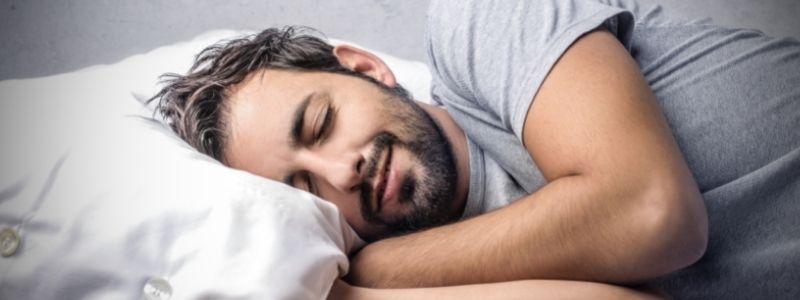All major manufacturers now include at least 3 natural or mixed Dunlop or Talalay latex mattresses in their product line. People show great appeal for these beds and experts say latex foam is the mattress of the future. So what makes latex so special when compared to memory foam? Let’s find out.
How Do Memory And Latex Mattresses Work?
Contents
Visco Memory Foam Mattress Essentials
Memory foam is made of open cells, billions of balloons with holes in them. When you sit on it, air moves from one cell to another, and the foam bed contours your body in a unique fashion, relieving pressure points and supporting your weight.
When you lie on a visco foam mattress there is no air in the cells to push back and cause discomfort. The air is spread to adjoining cells and the foam simply ‘melts’ under you to provide long-term, balanced support and comfort.
Latex Mattress Foam Essentials
First of all, what is latex: natural latex (see below) is pure rubber obtained from rubber trees while synthetic latex is an industrial product made by processing chemical substances or by mixing natural rubber with special additives.
Natural latex is usually made of 95% natural rubber and 5% vulcanization and curing factors, such as zinc oxide (2-3 %), fatty acid soaps (1-2%), sulfur (1-2%) and sodium (1-2%). These added chemicals are usually washed out in the final stages of the production process, so the end product is around 99% natural rubber.
Latex is a milky white liquid made of tiny rubber particles dispersed in water. Whipped with air to become foam, then heated, vulcanized and cured, it becomes the prime matter for making latex mattresses, toppers and pillows. This is called the Dunlop method. It is the traditional and least expensive way to produce latex mattresses. The other method is Talalay, an 8-hour-7-step process that has as end result a finer and more resilient form of latex, called Talalay Latex.
In short, this is what the Talalay latex method consists of:
- Raw latex (derived from natural rubber) is mixed with soaps and other curing substances, then cooled. During mixing and cooling, viscosity and temperature are checked permanently via computer, so that the mixture is uniform.
- Once cooled, the liquid latex rubber is whipped with air until it becomes a soft, vanilla-ice-cream-like foam which is then poured into a mold with iron rugs repeatedly moving up and down into the foam. When the mold is removed, these rugs will have formed the open cell structure of the Talalay latex.
- A vacuum then removes air bubbles and distributes the liquid rubber evenly through the mold.
- The latex foam is then frozen, to prevent particles from settling down at the bottom.
- The next step is heating latex up to 220 degrees Celsius through the rods. The freezing and heating processes are meant to make sure no air pockets remain and to provide an even firmness.
- Once taken off the mold, the latex is washed at least 5 times with fresh water, in order to remove residual soaps, natural proteins and cure agents. Then comes the drying process, which involves a special device built to perform curing while maintaining the shape of the latex core. These processes are necessary to ensure the comfort and durability of the Talalay mattress.
- The last step is the final impact testing, where ILD is verified and uneven latex pieces are removed. If it passes the tests, latex foam is cut into the needed slabs and stored, to be later picked up and turned into a Talalay mattress layer.
In short, Talalay latex combines the benefits of natural latex with chemicals meant to improve mattress durability and support. It has an open-cell structure, which ensures conformity with your body, elasticity (it bounces back instantly when you get up or move on the mattress) and free air circulation through and within it, to keep you cooler in summer and warmer during winter nights.
References
- Latex Mattress Buyers’ Guide – Really good info for anyone interested in buying a latex mattress.
- Latex Manufacturing Process – Video clip and overview of a latex manufacturing process.
- Insiders’ Guide to Picking a Latex Mattress – No-nonsense tips for choosing a latex foam mattress.
- Latex FAQ – Answers to common latex questions including how is it different from memory foam, the difference between Talalay and Dunlop processes as well as some technical specs.
- 100% Natural Latex – Benefits of natural latex products as well as other tips.
Latex Mattress Factory Direct Pricing!
Customer Opinions
I had a latex mattress on my bunk bed as a kid and it still remains for me the standard of wonderful comfort against which all other mattresses are judged. Thirty years later it still seems just as good. I presume they breathe, since it’s not a smooth surface, has airholes.
parents.berkeley.edu/recommend/where2buy/LatexMattr.html
Not long after we took the mattress from storage we started noticing the “mountain” in the center. On the “mountain”, the mattress is nice and firm. On either side (where we sleep), there are big, soft, sags. My husband is experiencing back pain from the sagging mattress. We are very disappointed and frustrated.
www.epinions.com/hmgd-Home_Furnishings-Mattresses-All-Abed_Latex_Mattress
We’ve had our latex mattress now about a month and really love it. There really is a difference not having those springs pushing back at you.
groups.google.com/group/alt.consumers.experiences
Sometimes, I just lie in bed and feel so comfortable, because I can actually feel that the memory foam is “hugging” a pressure point. This is mostly when I’m lying on my abdomen and I can feel it on my knees and ankles.
groups.google.com/group/alt.support.arthritis

